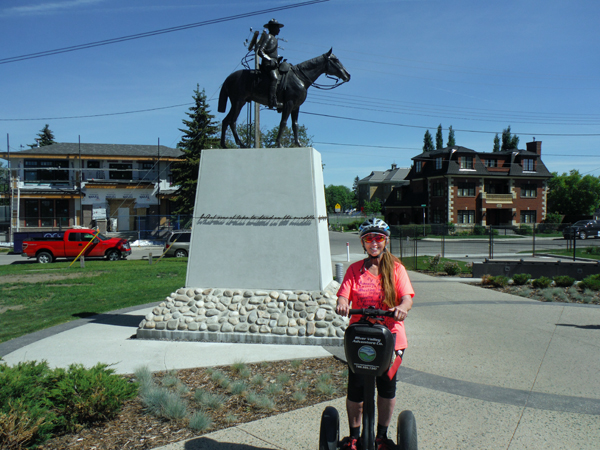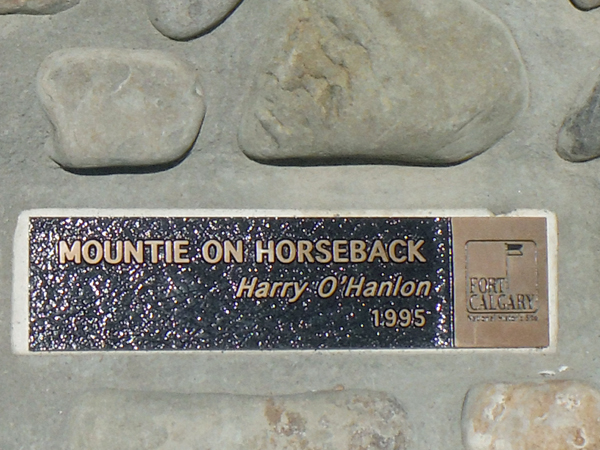|
This was the
15th time that the two RV Gypsies have taken a Segway tour, but it was
their first Segway tour in Canada, and it will NOT be their last in
Canada nor in the USA - not here, not there, not anywhere.
For information on tours here, call '403.972.7345 Everything is always
subject to change as time passes. |
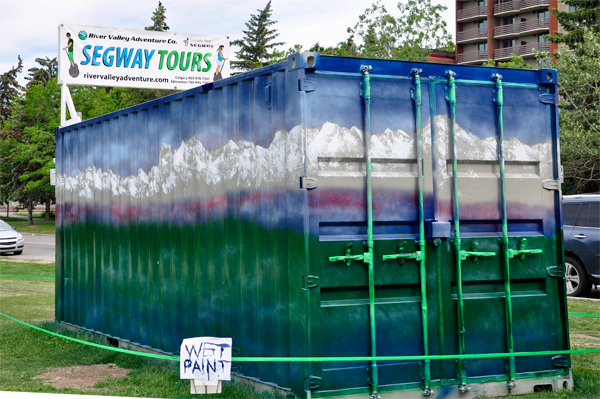 |
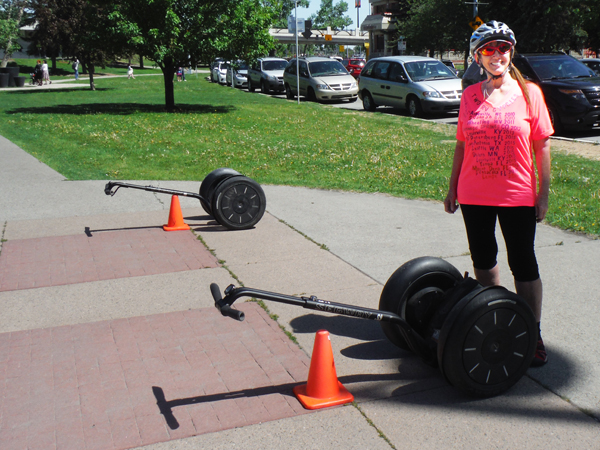 |
David, the tour
guide was enthusiastic, knowledgeable, and kept the tour very interesting.
Plus he allowed the two RV Gypsies a bit of free-wheeling time because
they were so experienced. The two RV Gypsies highly recommend this tour,
and hereby give a big thank you to David for sharing his knowledge of
the area. |
Below: Karen
Duquette made a shirt with the names of all the places that the two
RV Gypsies have taken a Segway tour. The list will continue to grow
because she really loves riding Segways. |
 |
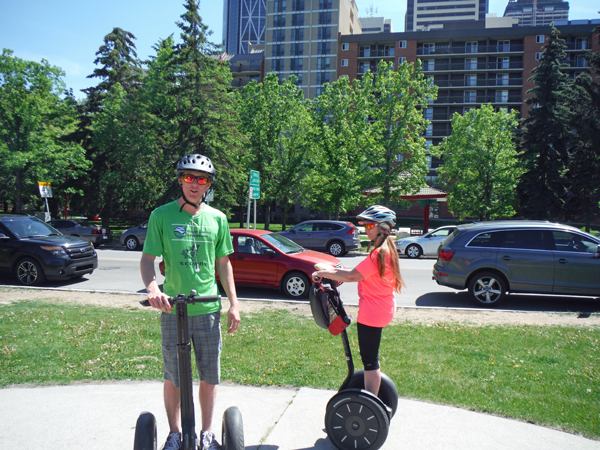 |
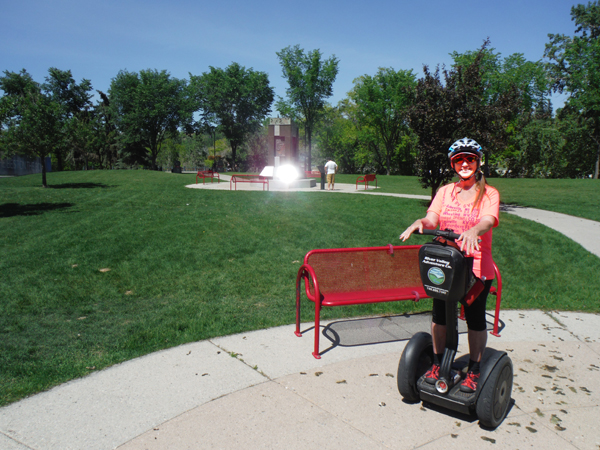 |
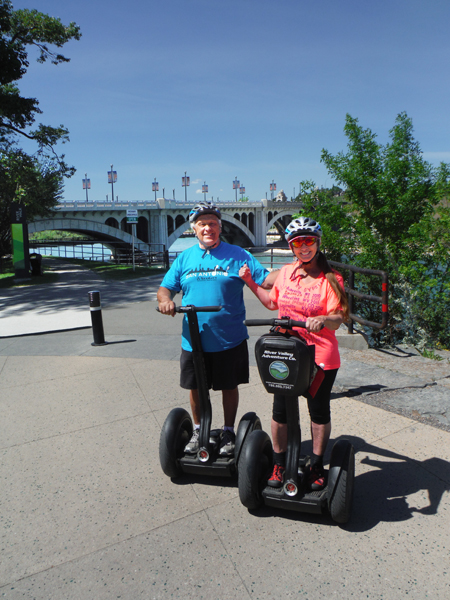 |
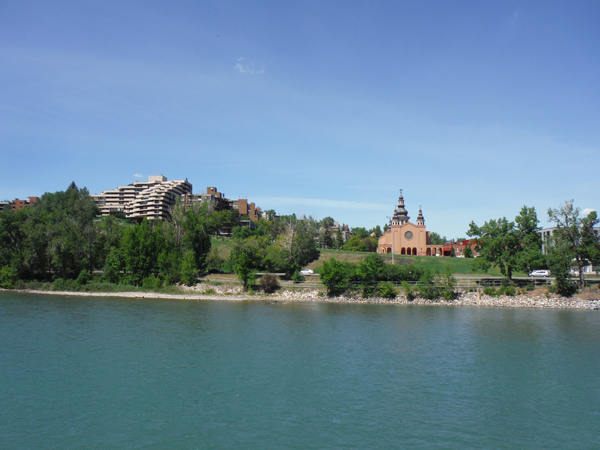 |
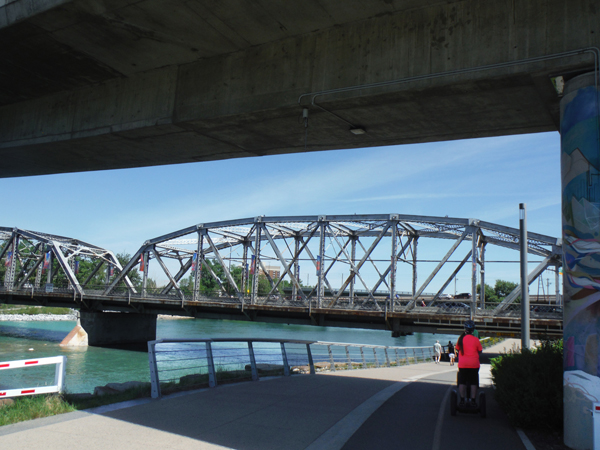 |
Below: After
the flood in 2013, residents all pulled together to give a helping hand
to those in need. Much of the art in Calgary now reflects a helping
hand theme. |
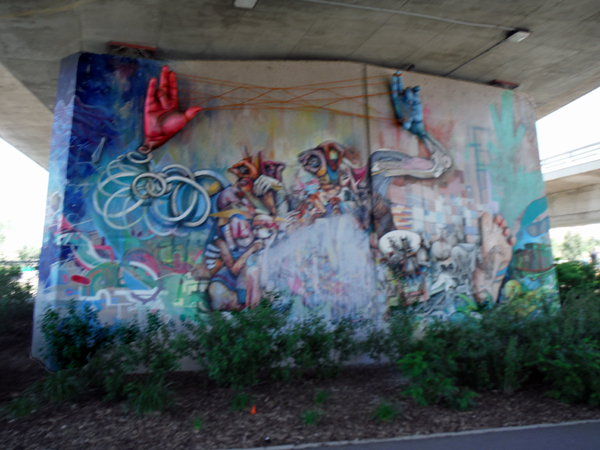 |
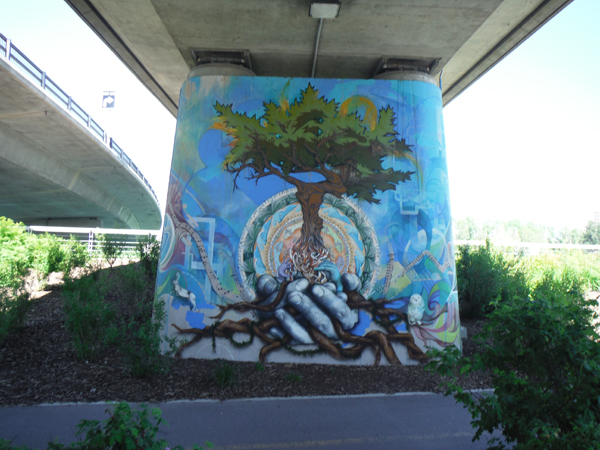 |
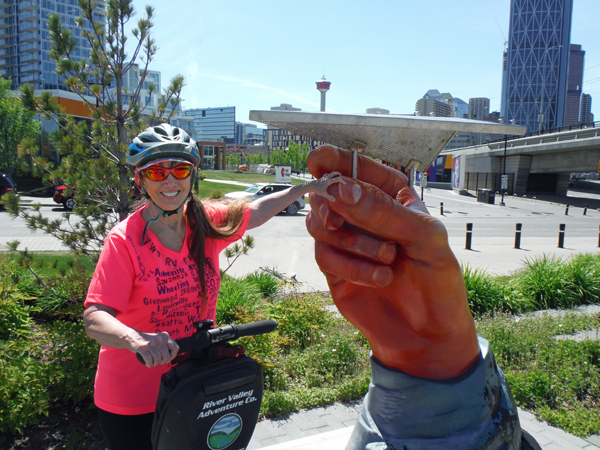 |
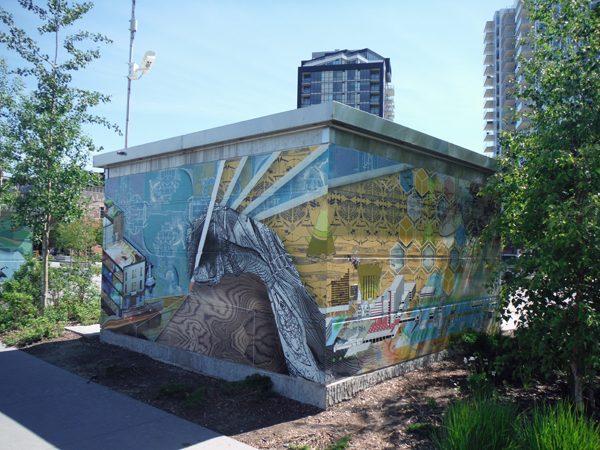 |
Below: The Calgary
Municipal Land Corporation proudly celebrated the initial phase of RiverWalk
on November 5, 2010 and thanked all community members and friends for
their efforts. |
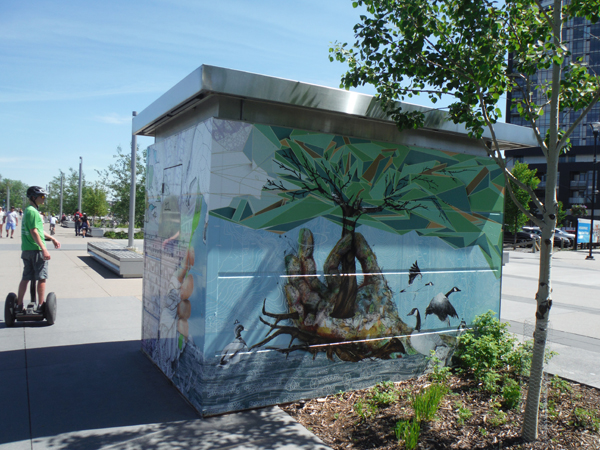 |
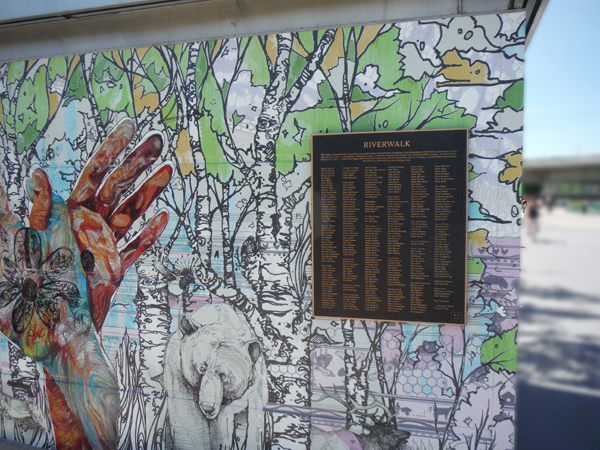 |
The RiverWalk
is more than just a recreational pathway, it offers walkers and cyclists
from neighboring communities a safe and efficient daily commute
to downtown, all without adding more cars to city roads. Much of it
is safely divided into pedestrian lanes and bicycle lanes. RiverWalk
actually connects to walkways all the way to Vancouver. |
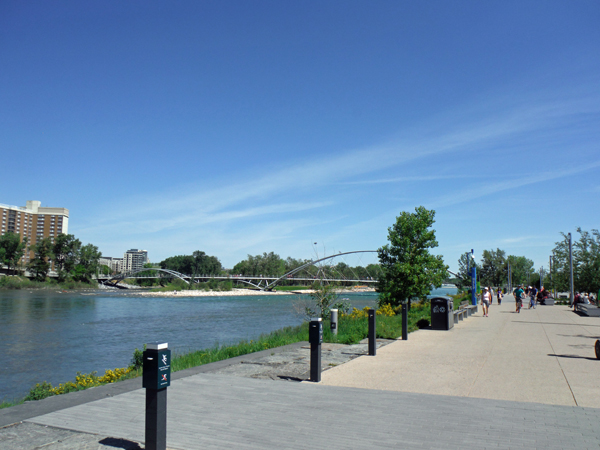 |
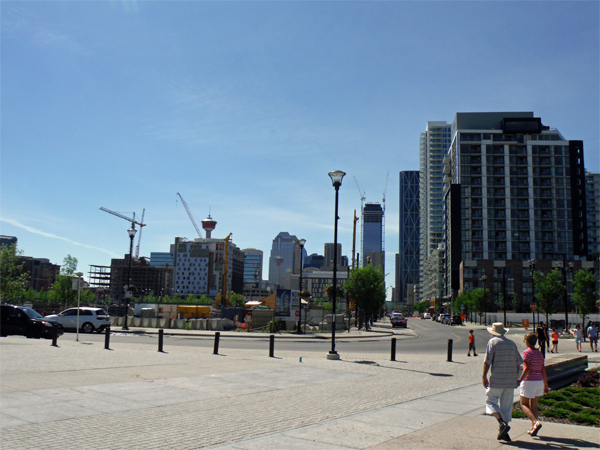 |
Below: The George
C. King Bridge (formerly known as St. Patrick’s Bridge) was built
with steel arches and a concrete deck to create a link to the East Village
development and access to St. Patrick’s Island (Prince's Island
Park). When the Bridge opened in October 2014, it
became a symbol of the new connection between East Village and downtown
Calgary and the community of Bridgeland north of the Bow River.
The intention was to make the George C. King Bridge a destination
in itself to observe the Bow River beneath and contemplate the cityscape.
It is a three-span 182-metre long bridge.
The design includes lighting integrated in the balustrade to illuminate
the deck without using visually disruptive light poles. The main lighting
design concept was for the bridge to transition from day to night and
night to day. During day light, the arches are the most fascinating
aspect of the bridge. As sun goes down and the bridge lights go on,
the gently lit deck of the bridge magnifies the flat and slender (suspended)
structure while the arches take a step back and gradually disappear.
Additional lighting integrated in the deck illuminates the land and
water below the deck after dark, creating a soft bed of light influenced
by seasonal changes to the landscape. Unfortunately, the two RV Gypsies
were not able to be on the bridge in the evening to experience this.
|
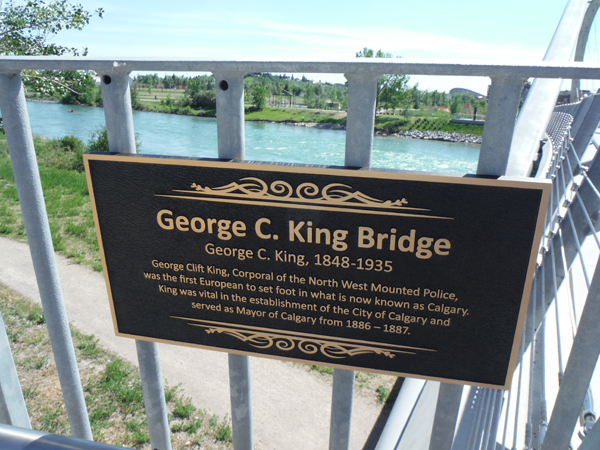 |
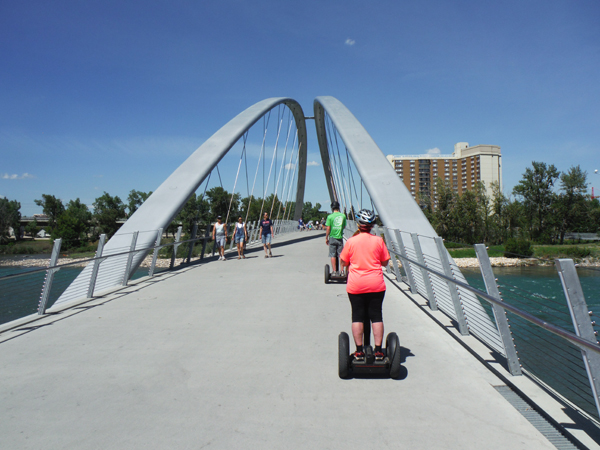 |
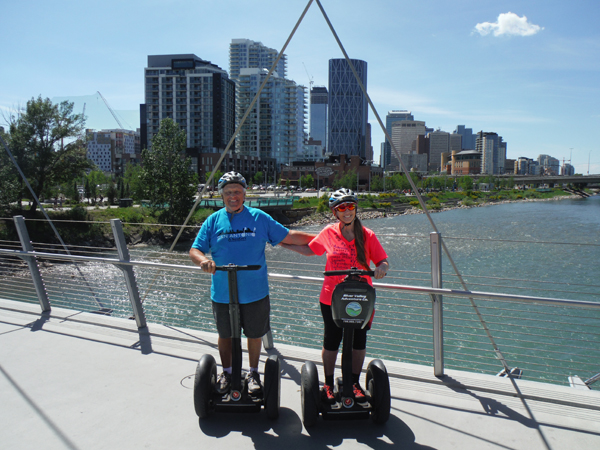 |
Below: A Spectacular
artistic design provides lighting for the island. |
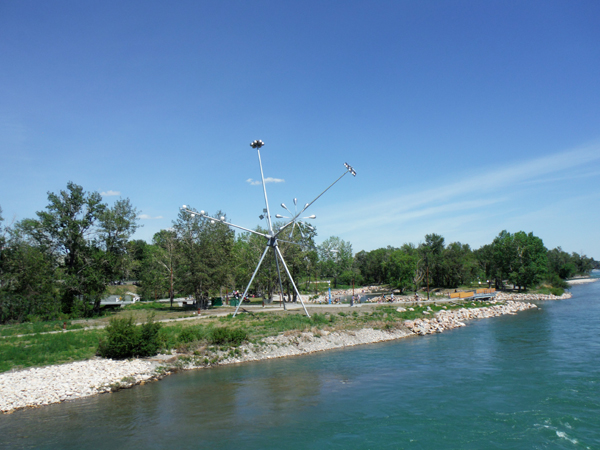 |
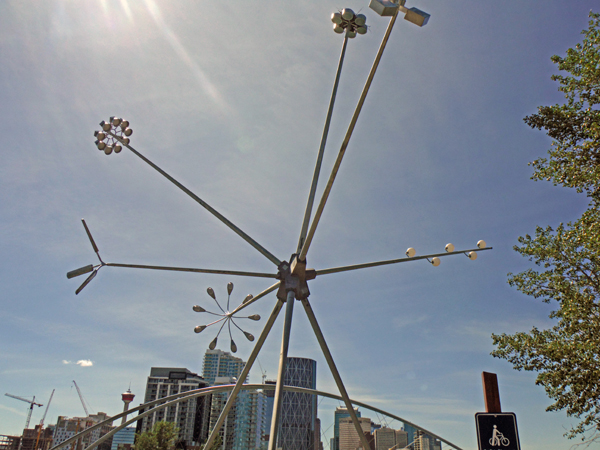 |
Below: The
amazing lights also provided a safe environment for an Osprey Nest. |
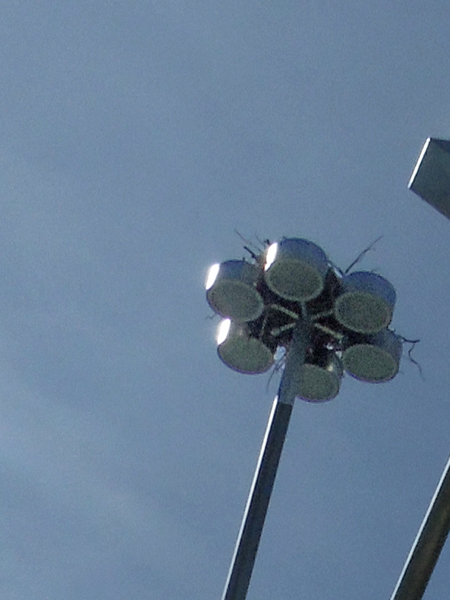 |
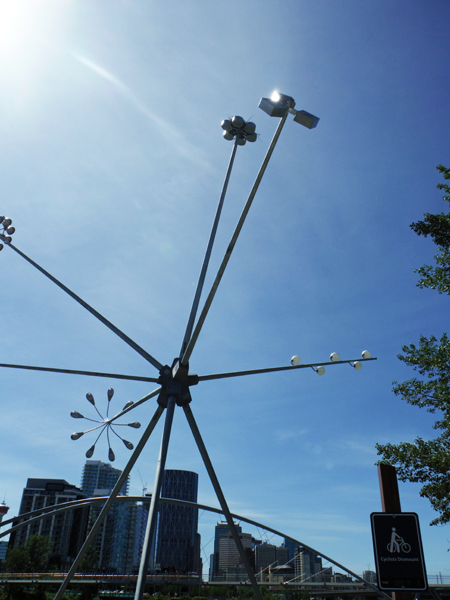 |
Below: Prince's
Island Park an urban park in the city of Calgary, Alberta, Canada. It
is developed on an island on the Bow River, immediately north of downtown
Calgary with 31 acres of recreation.
Prince's Island was named after Peter Anthony Prince, a lumberman
from Quebec who came to Calgary in 1886 and founded the Eau Claire Lumber
Mill. The Eau Claire and Bow River Lumber Company dug a channel (now
the lagoon) to get logs from Kananaskis closer to the Calgary sawmill,
resulting in an island.
In 1889 Prince formed the Calgary Water Power Company to supply electric
streetlights to the town. Despite its name, the company used steam generators
powered by sawdust until 1893 when Prince built Calgary's first hydro-electric
plant near the east end of the lagoon. After his death in 1925 the mill
was still operational until 1944. The land was purchased by The City
from the remaining Prince family in 1947 for development of park land.
It was named after Peter Anthony Prince, the founder of the Eau Claire
Lumber Mill. The park was built on land donated in 1947 to the city
by the Prince family. It is often incorrectly referred to as "Princess
Island Park". The park is open from 5 a.m. until 11p.m. every regular
day. (times always subject to change)
The island has a surface of 20 hectares and is linked by three bridges
to Eau Claire and downtown Calgary and a north bridge to Memorial Drive
and the community of Crescent Heights. It is part of the pathway and
hiking trail system lining both sides of the Bow River. The southern
arm of the river has been landscaped, while the eastern end of the island
re-creates a wetland environment. Canada geese and mallard ducks are
common birds found in the park. |
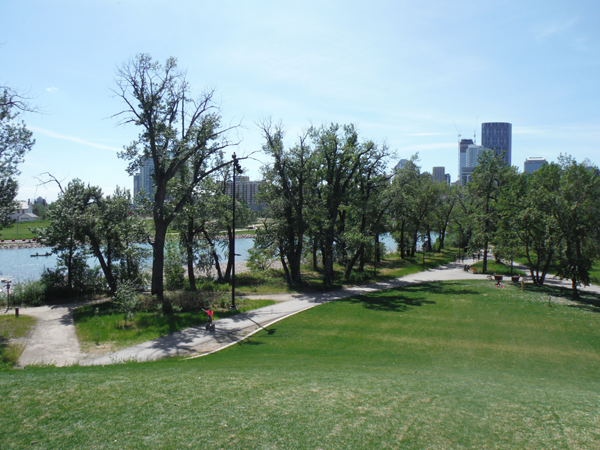 |
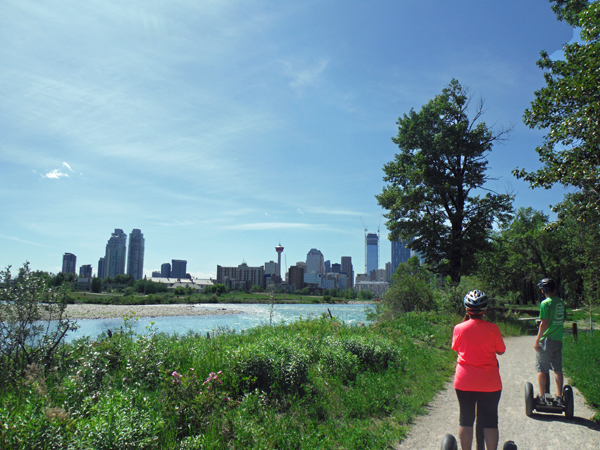 |
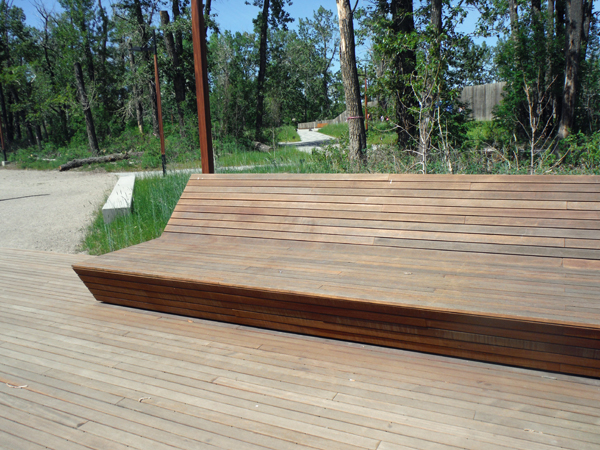 |
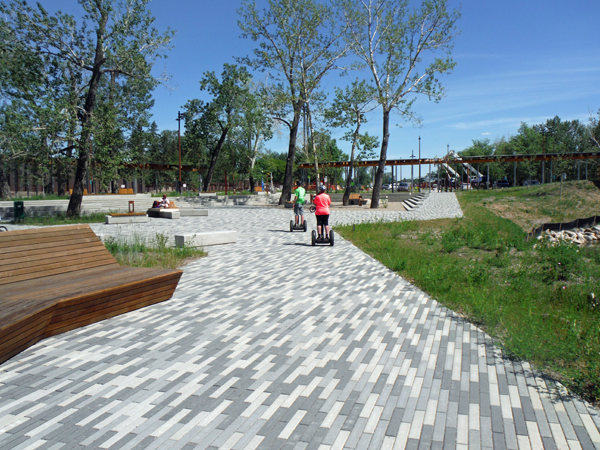 |
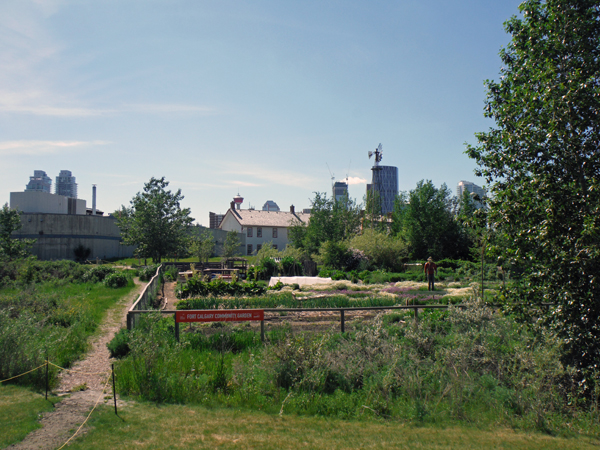 |
|
|
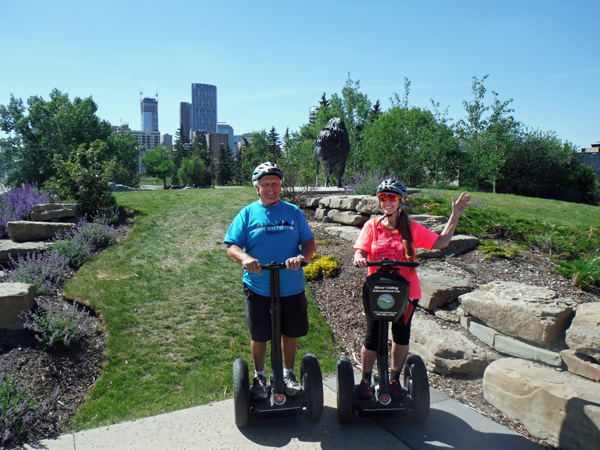 |
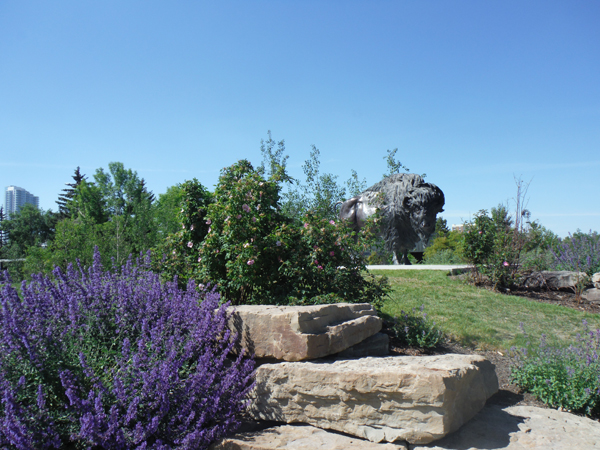 |
Below: Mosaic
tile artwork. |
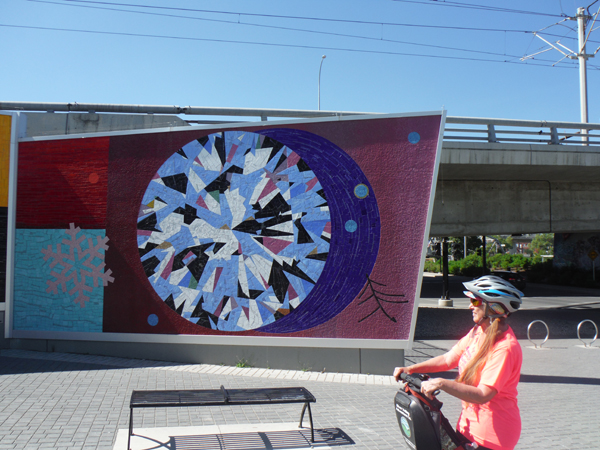 |
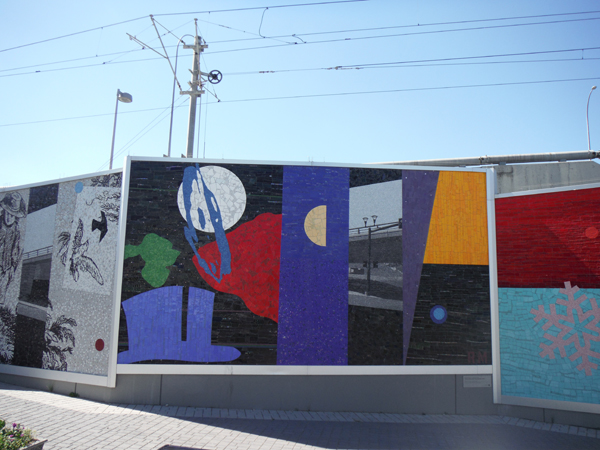 |
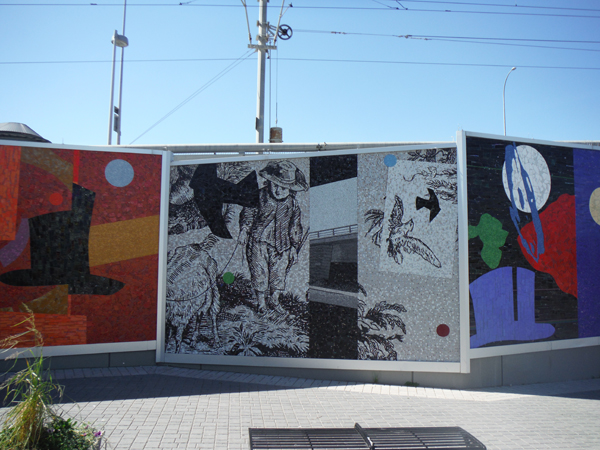 |
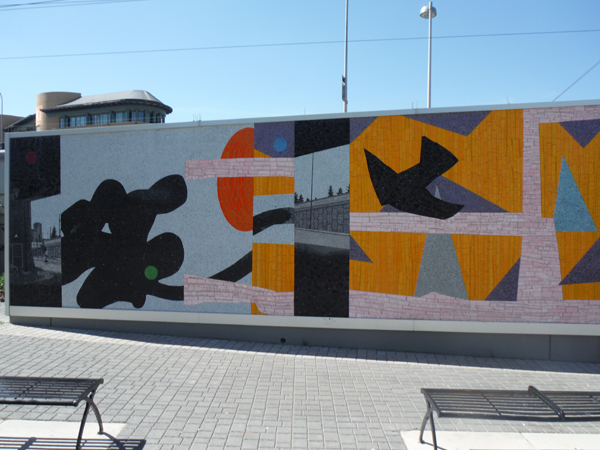 |
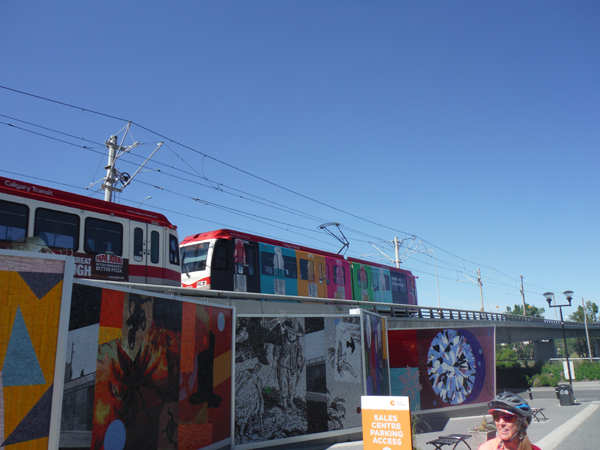 |




























